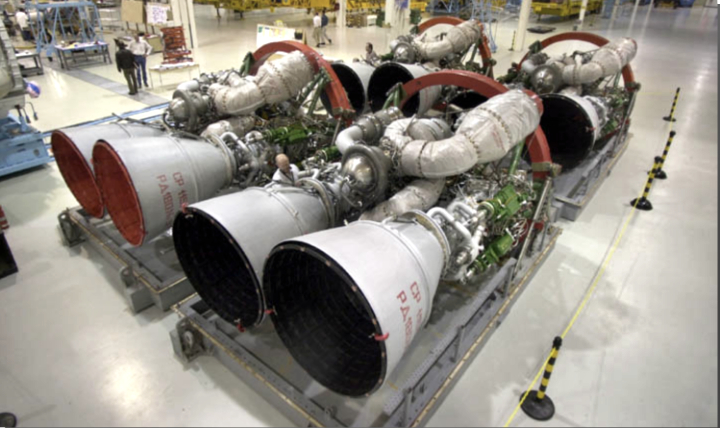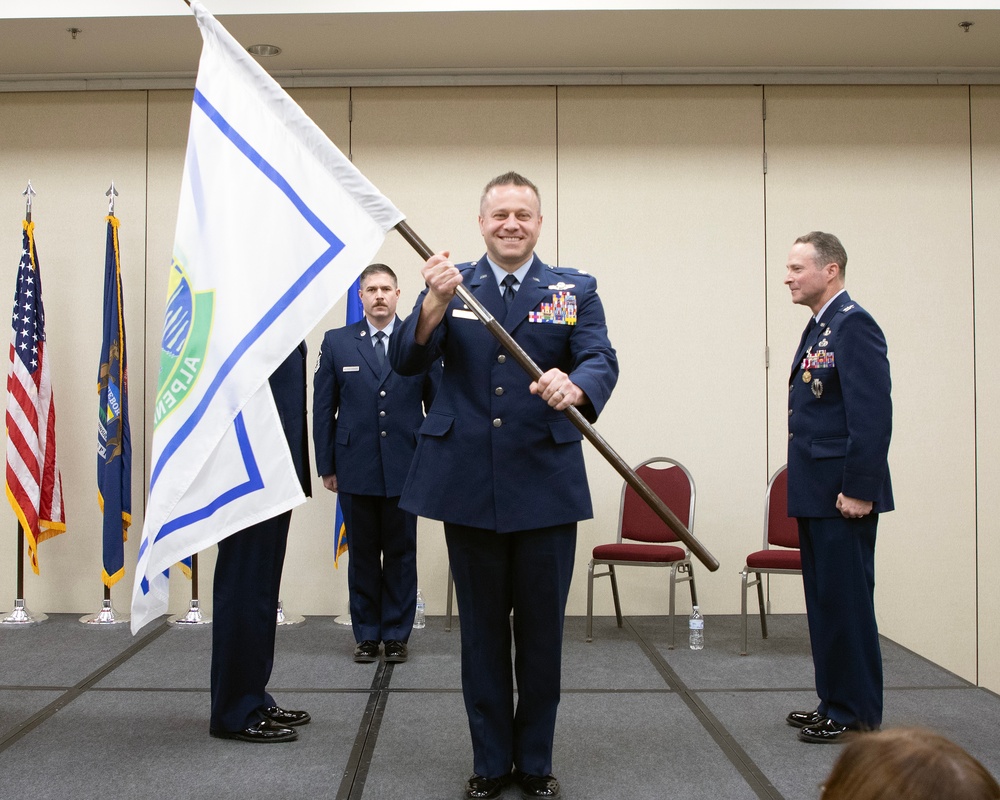NASA’s Landsat 9 Mission Successfully Launched By ULA From Vandenberg Space Force Base, Plus, US Space Force Reports On Their Involvement – SatNews
A United Launch Alliance (ULA) Atlas V rocket lifts off at 11:12 a.m. from Vandenberg Space Force Base on September 27, 2021, carrying NASA’s Landsat 9 and multiple smallsat payloads to orbit.

Atlas V accelerated using 860,000 pounds of thrust while performing the pitch and yaw maneuvers off the launch pad to obtain the proper heading. The Atlas V delivered Landsat 9 into a near-polar, sun synchronous orbit around Earth, continuing the Landsat program’s vital role of repeat global observations for monitoring, understanding and managing Earth’s natural resources. The addition of Landsat 9 will continue Landsat’s irreplaceable record of Earth’s land surfaces with high-quality, global land imaging measurements for decades to come.

Space Systems Command offered the following regarding this important launch…
A United Launch Alliance Atlas V 401 launch vehicle, carrying the NASA-U.S. Geological Survey’s Landsat 9 Observatory satellite, along with four cubesats from the U.S. Space Force’s Mission Manifest Office, was successfully launched today at 11:12 a.m. from Space Launch Complex-3 at Vandenberg Space Force Base in northern Santa Barbara County, California.
Space Systems Command’s Launch Enterprise Mission Manifest Office worked with NASA’s Goddard Space Flight Center (GSFC) during the integration period on the Landsat 9 Evolved Expendable Launch Vehicle Secondary Payload Adapter (ESPA) Flight System (L9EFS), integrating multi-manifest satellite vehicles (MSVs) into several dispensers designed to fit onto an ESPA ring.
“The U.S. Space Force and Launch Enterprise continually look for innovative opportunities to provide access to space,” said Col. Rob Bongiovi, SSC Launch Enterprise director. “This successful collaboration with NASA highlights the tireless efforts of our organizations to develop and launch capability while maximizing the taxpayers’ dollars.”

The MMO operates as the Space Force’s “Gateway to Space” by working with SSC’s Space Force Operations to ensure all Department of Defense and Intelligence Community sponsored satellite vehicles have a ride to space. The L9EFS team includes members of the USSF’s MMO, NASA’s GSFC, and Parsons Corporation.

“At the onset of the mission, the objective was to fly all mass simulators for a proof of concept, but we quickly identified real satellites to launch instead,” said Maj. Julius Williams, chief of the MMO. “Our ability to work with mission partners throughout the government and launch the most capability available into orbit is a key tenet of the Mission Manifest Office.”
Four MSVs sponsored by the Defense Innovation Unit, Air Force Research Laboratory, Missile Defense Agency, and NASA’s CubeSat Launch Initiative (CSLI) were flown and deployed from the L9EFS.

The Colorado Ultraviolet Transit Experiment (CUTE) from the University of Colorado at Boulder will study exoplanet atmospheres by monitoring them in the near-ultraviolet part of the electromagnetic spectrum.
The Cusp Plasma Energy Detector (CuPID) from Boston University will collect data on interactions between solar wind and Earth’s magnetosphere. The spacecraft carries a novel wide field-of-view soft X-ray telescope to generate these first of their kind images.
CesiumAstro developed the other two cubesats in partnership with DIU. Cesium Mission 1 (CM1) is an on-orbit testbed featuring state-of-the-art active phased array communication systems and intersatellite links. CM1 will provide the capability to demonstrate advanced features of CesiumAstro’s technology such as dynamic waveform switching and dynamic link optimization. Both Cesium satellites include three onboard radios for tracking, telemetry, and commanding and can coordinate to perform forward, return, and cross-link experiments commanded from Cesium’s ground segment or customer ground segments globally.
With today’s successful launch, Vandenberg Space Force Base celebrates a couple of important milestones: the 300th Atlas and 2,000th launch from Vandenberg since the base became active in the late 1950’s.
“This mission gives us the opportunity to celebrate the thousands of people from Team Vandenberg, past and present, who share a proud heritage beginning with the first launch in 1958 through this 2,000th launch,” said Col. Robert Long, Space Launch Delta 30 commander. “Space—and launch—is hard. Our record of success is a testament to longstanding mission excellence.”
Vandenberg launched its first missile, nicknamed “Tune Up,” on December 16, 1958. The PGM-17A Thor intermediate-range ballistic missile, built by the Douglas Aircraft Company (later, McDonnell Douglas) in Santa Monica, California, lifted off from Launch Facility 75-1-1, known today as Space Launch Complex-2 East. Soon after, the first SM-65 Atlas intercontinental ballistic missile, built by General Dynamics’ Convair division in San Diego was launched on September 9, 1959 from Launch Facility 576 A-2. T
The Thor IRBM later matured into the workhorse space launch vehicle for the Air Force, NASA and commercial companies known as the Delta, and later Delta II until its final mission for NASA’s Earth Observing System, launched from SLC-2E at Vandenberg on Sept. 15, 2018, capping an illustrious 60-year launch history.
“Vandenberg Space Force Base has had 56 launch facilities all together supporting customers between government entities and commercial launch providers,” said Dr. Scott Bailey, Space Launch Delta 30 historian.
Since 1958, the previous 1,999 launches Vandenberg facilitated include missile and space programs such as the Atlas, Thor, Titan I, Titan II, Minuteman I/II/III, Scout, Peacekeeper, Delta II, Delta IV/Heavy, and SpaceX’s Falcon 9 among many others. Space Launch Delta 30’s objective with every mission, is to provide indispensable launch, landing, and range capabilities to the nation.
All personnel assigned to SLD 30 launch missions, provide safe launch and range capabilities as the only military space launch installation on the west coast of the continental United States. This is to support commercial and government customers. It takes an entire collaborate joint force of Airmen and Guardians to oversee every launch at Vandenberg and Col. Long understands the importance of team Vandenberg.
“It is the entire team today and across six decades that we celebrate as we achieve this milestone. What’s more, we’re crossing this monumental threshold with two great mission partners, NASA and United Launch Alliance,” said Long.
Original news item…
The launch is on track for September 27 from Space Launch Complex-3 at Vandenberg Space Force Base. Launch is planned for 11:11 a.m. PDT. The live launch broadcast starts at 10:30 a.m. PDT on September 27 at www.ulalaunch.com.

Landsat 9 is a joint mission of NASA and the U.S. Geological Survey (USGS). In addition to Landsat 9, this mission includes the ESPA Flight System (EFS) that will deploy multiple cubesats after Landsat 9 separation. The Atlas V will deploy the Landsat 9 and the smallsats into two different orbits, enabling the first, four-burn, Centaur mission for ULA on an Atlas V rocket. The Centaur upper stage has the capacity for increased performance, and the flight design of the Landsat 9 mission takes advantage of that capability.

The mission will launch on an Atlas V 401 configuration rocket that includes a 13.7 ft. (4 meters) Extra Extended Payload Fairing (XEPF) and stands 194 ft. (59 meters) tall. The Atlas booster for this mission is powered by the RD AMROSS RD-180 engine. Aerojet Rocketdyne provided the RL10C-1 engine for the Centaur upper stage.

This will be the 88th launch of the Atlas V rocket and 20th mission launched on an Atlas V in partnership with NASA’s Launch Services Program (LSP). This launch is the 300th Atlas launch from Vandenberg Space Force Base. To date, ULA has launched 144 times with 100 percent mission success.
“We are proud to continue to serve as the primary launch provider for Landsat missions. ULA and our heritage launch vehicles have launched every Landsat mission since 1972,” said Gary Wentz, ULA vice president of Government and Commercial Programs. “The Landsat series provides outstanding data for Earth environment and science-based research and Landsat 9 will add to these capabilities. We have worked alongside our partners, in a challenging health environment, to prepare to launch this important mission that will empower Earth research from space for decades to come.”

![DVIDS – Images – 123rd Airlift Wing earns top awards for excellence [Image 5 of 5] DVIDS – Images – 123rd Airlift Wing earns top awards for excellence [Image 5 of 5]](https://101veterans.com/wp-content/uploads/2025/12/1765775077_1000w_q95.jpg)
![DVIDS – Images – McConnell fuels team proves multicapable [Image 2 of 5] DVIDS – Images – McConnell fuels team proves multicapable [Image 2 of 5]](https://101veterans.com/wp-content/uploads/2025/12/1765731759_1000w_q95.jpg)
